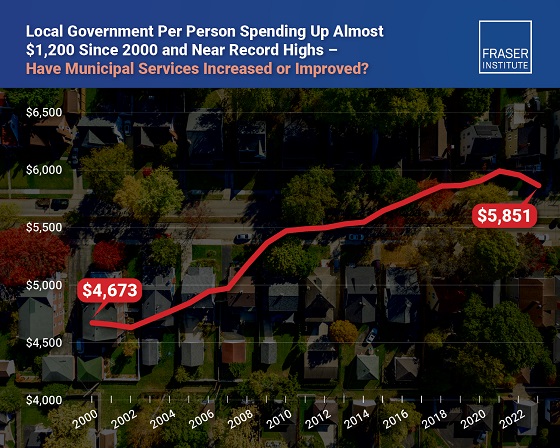Health
Trump signs executive order to ‘make America healthy again,’ address chronic disease
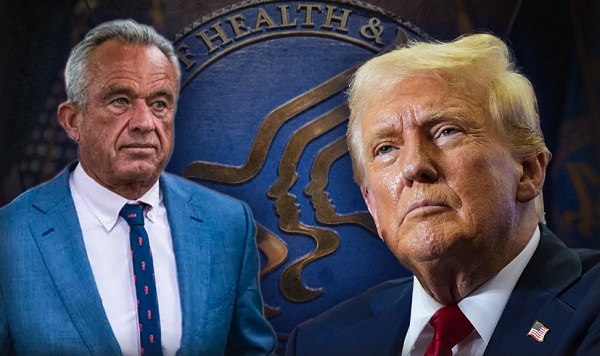
From LifeSiteNews
The order repeatedly underscores the declining health and fitness of America’s children as its number one priority, noting that ‘the health of Americans is on an alarming trajectory that requires immediate action’ and that this ‘applies urgently to America’s children.’
Shortly after Robert F. Kennedy Jr. was sworn in as secretary of the Department of Health & Human Services (HHS), President Trump signed an executive order titled Establishing The President’s Make America Healthy Again Commission (MAHA EO) to investigate and address the root causes of America’s escalating health crisis, with a focus on childhood chronic disease.
Chaired by Kennedy, the commission has four main policy directives to reverse chronic disease: Empower Americans through transparency and open-source data and avoid conflicts of interest in all federally funded health research; Prioritize gold-standard research on why Americans are getting sick in all health-related research funded by the federal government; Work with farmers to ensure that U.S. food is the healthy, abundant, and affordable; and ensure expanded treatment options and health coverage flexibility for beneficial lifestyle changes and disease prevention.
“To fully address the growing health crisis in America, we must redirect our national focus, in the public and private sectors, toward understanding and drastically lowering chronic disease rates and ending childhood chronic disease,” declares the order. “This includes fresh thinking on nutrition, physical activity, healthy lifestyles, over-reliance on medication and treatments, the effects of new technological habits, environmental impacts, and food and drug quality and safety.”
“We must restore the integrity of the scientific process by protecting expert recommendations from inappropriate influence and increasing transparency regarding existing data,” it continues. “We must ensure our healthcare system promotes health rather than just managing disease.”
The MAHA EO comes at a time when many Americans have lost trust in the nation’s healthcare system and are increasingly skeptical as to whether they are receiving honest answers about the causes of the country’s health crisis and how to improve it.
The order repeatedly underscores the declining health and fitness of America’s children as its number one priority, noting that “the health of Americans is on an alarming trajectory that requires immediate action,” and that “This concern applies urgently to America’s children.”
Immediate assessment and strategy to make children healthy again
At the outset, the commission will “advise and assist the President on how best to exercise his authority to address the childhood chronic disease crisis” and within 100 days, will submit to the president its “Make Our Children Healthy Again Assessment.”
Within 180 days, the commission will present a “Make our Children Healthy Again Strategy,” “restructuring the Federal Government’s response to the childhood chronic disease crisis, including by ending Federal practices that exacerbate the health crisis or unsuccessfully attempt to address it, and by adding powerful new solutions that will end childhood chronic disease.”
The order notes that:
In 2022, an estimated 30 million children (40.7 percent) had at least one health condition, such as allergies, asthma, or an autoimmune disease. Autism spectrum disorder now affects 1 in 36 children in the United States — a staggering increase from rates of 1 to 4 out of 10,000 children identified with the condition during the 1980s. Eighteen percent of late adolescents and young adults have fatty liver disease, close to 30 percent of adolescents are prediabetic, and more than 40 percent of adolescents are overweight or obese.
To fully address the growing health crisis in America, we must redirect our national focus, in the public and private sectors, toward understanding and drastically lowering chronic disease rates and ending childhood chronic disease. This includes fresh thinking on nutrition, physical activity, healthy lifestyles, over-reliance on medication and treatments, the effects of new technological habits, environmental impacts, and food and drug quality and safety. We must restore the integrity of the scientific process by protecting expert recommendations from inappropriate influence and increasing transparency regarding existing data. We must ensure our healthcare system promotes health rather than just managing disease.
“Thank you, President Trump, for your leadership, your confidence in me, and your deep concern for the health of the American people,” said Kennedy. “You have truly heard the calls of the millions of mothers who simply want the tools – and the truth – so they can make informed decisions for their children.”
“I have prayed each morning for the past two decades for God to put me in a position to solve the childhood chronic disease epidemic,” Kennedy continued, “and now, thanks to you Mr. President, we will make this promise a reality.”
Business
RFK Jr. says Hep B vaccine is linked to 1,135% higher autism rate

From LifeSiteNews
By Matt Lamb
They got rid of all the older children essentially and just had younger children who were too young to be diagnosed and they stratified that, stratified the data
The Centers for Disease Control and Prevention (CDC) found newborn babies who received the Hepatitis B vaccine had 1,135-percent higher autism rates than those who did not or received it later in life, Robert F. Kennedy Jr. told Tucker Carlson recently. However, the CDC practiced “trickery” in its studies on autism so as not to implicate vaccines, Kennedy said.
RFK Jr., who is the current Secretary of Health and Human Services, said the CDC buried the results by manipulating the data. Kennedy has pledged to find the causes of autism, with a particular focus on the role vaccines may play in the rise in rates in the past decades.
The Hepatitis B shot is required by nearly every state in the U.S. for children to attend school, day care, or both. The CDC recommends the jab for all babies at birth, regardless of whether their mother has Hep B, which is easily diagnosable and commonly spread through sexual activity, piercings, and tattoos.
“They kept the study secret and then they manipulated it through five different iterations to try to bury the link and we know how they did it – they got rid of all the older children essentially and just had younger children who were too young to be diagnosed and they stratified that, stratified the data,” Kennedy told Carlson for an episode of the commentator’s podcast. “And they did a lot of other tricks and all of those studies were the subject of those kind of that kind of trickery.”
But now, Kennedy said, the CDC will be conducting real and honest scientific research that follows the highest standards of evidence.
“We’re going to do real science,” Kennedy said. “We’re going to make the databases public for the first time.”
He said the CDC will be compiling records from variety of sources to allow researchers to do better studies on vaccines.
“We’re going to make this data available for independent scientists so everybody can look at it,” the HHS secretary said.
— Matt Lamb (@MattLamb22) July 1, 2025
Health and Human Services also said it has put out grant requests for scientists who want to study the issue further.
Kennedy reiterated that by September there will be some initial insights and further information will come within the next six months.
Carlson asked if the answers would “differ from status quo kind of thinking.”
“I think they will,” Kennedy said. He continued on to say that people “need to stop trusting the experts.”
“We were told at the beginning of COVID ‘don’t look at any data yourself, don’t do any investigation yourself, just trust the experts,”‘ he said.
In a democracy, Kennedy said, we have the “obligation” to “do our own research.”
“That’s the way it should be done,” Kennedy said.
He also reiterated that HHS will return to “gold standard science” and publish the results so everyone can review them.
International
RFK Jr. tells Tucker how Big Pharma uses ‘perverse incentives’ to get vaccines approved
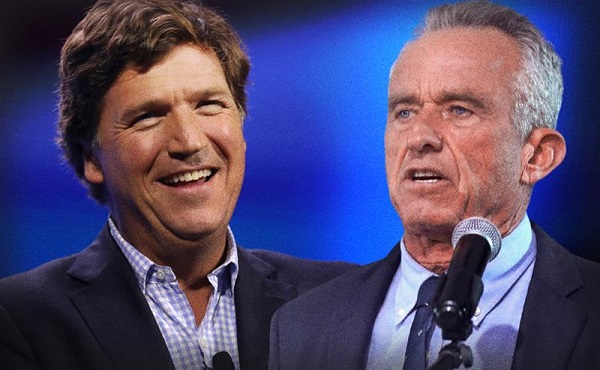
From LifeSiteNews
By Matt Lamb
Kennedy defended his decision to fire all 17 members of the Advisory Committee on Immunization Practices, which he decried as a tool used to “rubber stamp” vaccines.
The vaccine approval process is a “bundle of perverse incentives” since pharmaceutical companies stand to make billions of dollars in revenue from it, Secretary of Health and Human Services Robert F. Kennedy Jr. told Tucker Carlson recently.
Kennedy appeared on Carlson’s show yesterday to discuss a variety of issues, including the potential link between autism and vaccines and his overhauling of the vaccine advisory committee at the Centers for Disease Control and Prevention last month.
Twenty years ago, Bobby Kennedy was exiled from polite society for suggesting a link between autism and vaccines. Now he’s a cabinet secretary, and still saying it.
(0:00) The Organized Opposition to RFK’s Mission
(6:46) Uncovering the Reason for Skyrocketing Rates of Autism… pic.twitter.com/g8T8te3kNC— Tucker Carlson (@TuckerCarlson) June 30, 2025
Kennedy began by explaining that Big Pharma has been targeting academic journals to ensure its products receive favorable reviews.
“The journals won’t publish anything critical of vaccines … there’s so much pressure on them. They’re funded by pharmaceutical companies, and they’ll lose advertising and revenue from reprints,” Kennedy said.
Kennedy then noted that Big Pharma will “pay to get something published in these journals,” before accusing industry leaders of pushing drugs on doctors and of hiring “mercenary scientists” to manipulate data until their product is deemed safe and effective.
The entire complex is broken due to the “perverse incentives,” he lamented.
Later in the interview, Kennedy defended his decision to fire all 17 members of the Advisory Committee on Immunization Practices (ACIP) in June, which he decried as a mere tool to “rubber stamp” vaccines.
It served as “a sock puppet for the industry that it was supposed to regulate,” Kennedy exclaimed, citing conflicts of interest for the overwhelming majority of its board members.
This sort of “agency capture” explains the lucrative nature of vaccines, he added.
— Matt Lamb (@MattLamb22) July 1, 2025
Kennedy then summarized the “perverse” process as follows:
First of all, the federal government often times actually designs the vaccine, [the National Institutes of Health] would design it, would hand it over to the pharmaceutical company. The pharmaceutical company then runs it … first through [the] FDA, then through [the] ACIP, and gets it recommended.
If you can get that recommendation you now got a billion dollars in — at least — revenues by the end of the year, every year, forever. So, there was a gold rush to add new vaccines to the schedule and ACIP never turned away a single vaccine … that came to them they recommended, and a lot of these vaccines are for diseases that are not even casually contagious.
Kennedy further pointed to the Hepatitis B shot for newborns as an example of how the industry has been corrupted.
In 1999, the CDC “looked at children who had received the hepatitis vaccine within the first 30 days of life and compared those children to children who had received the vaccine later — or not at all. And they found an 1,135% elevated risk of autism among the vaccinated children. It shocked them. They kept the study secret and manipulated it through five different iterations to try to bury the link,” he said.
“We want to protect public health,” Kennedy explained, but “these vaccines … can cause chronic disease, chronic injuries that last a lifetime.”
-

 Crime2 days ago
Crime2 days agoNational Health Care Fraud Takedown Results in 324 Defendants Charged in Connection with Over $14.6 Billion in Alleged Fraud
-

 Health2 days ago
Health2 days agoRFK Jr. Unloads Disturbing Vaccine Secrets on Tucker—And Surprises Everyone on Trump
-
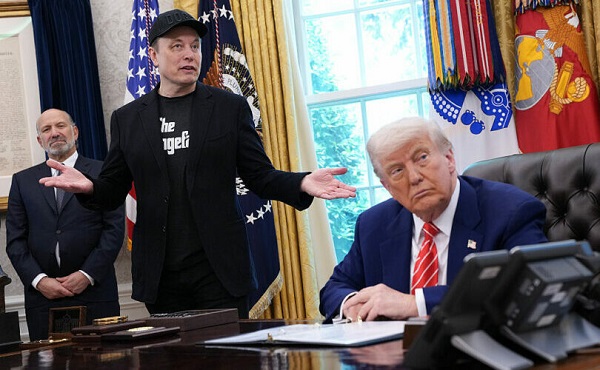
 Business1 day ago
Business1 day agoElon Musk slams Trump’s ‘Big Beautiful Bill,’ calls for new political party
-
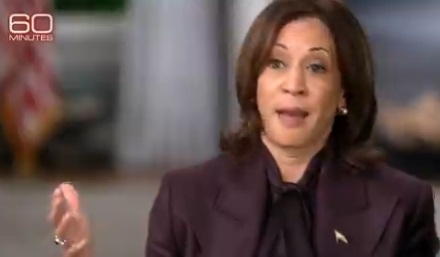
 International23 hours ago
International23 hours agoCBS settles with Trump over doctored 60 Minutes Harris interview
-

 Business16 hours ago
Business16 hours agoLatest shakedown attempt by Canada Post underscores need for privatization
-

 Business15 hours ago
Business15 hours agoWhy it’s time to repeal the oil tanker ban on B.C.’s north coast
-
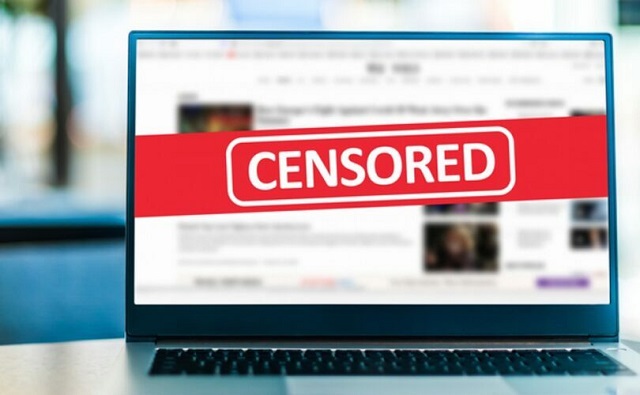
 Censorship Industrial Complex1 day ago
Censorship Industrial Complex1 day agoGlobal media alliance colluded with foreign nations to crush free speech in America: House report
-

 Aristotle Foundation24 hours ago
Aristotle Foundation24 hours agoHow Vimy Ridge Shaped Canada



